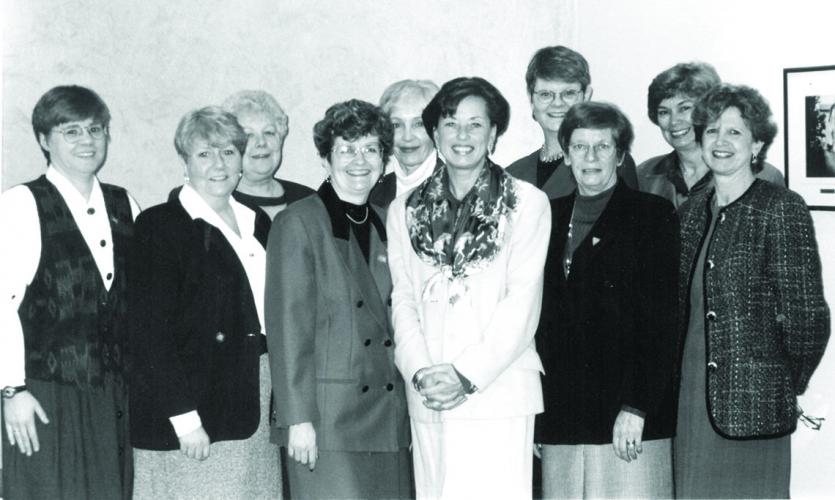
1998
After decades of hard work and advocacy, Feb. 18, 1998 was a day to celebrate.
Bill 127 was proclaimed during an event at RNAO home office, making Ontario the first Canadian jurisdiction to legally recognize the role of nurse practitioner. Delegates from various nursing and health organizations came out to witness long-overdue acknowledgement for hundreds of NPs who had been providing enhanced care to Ontarians since the 1960s.
“For many individuals in this room today, this has been a long journey,” said Charlotte Noesgaard, who was RNAO president at the time.
That journey began in 1965, when the first NP program was introduced at the University of Colorado. In Ontario, the first university program for an expanded RN role opened at the University of Toronto in 1971.
Over the next two decades, as many as 250 NPs practised in Ontario, working largely in northern outposts and community health centres. Though the role had not been formally recognized, and the last remaining NP education program in Ontario shut down in 1983, NPs were consistently cited in reports and task forces for their ability to provide high quality care.
A big break came in 1993, when then provincial health minister Ruth Grier (NDP) launched a research and consultation initiative to explore expanding the NP role. This led to the introduction of the Primary Health Care Nurse Practitioner (PHCNP) education program in 1995. Today, Grier is proud of the immense contribution of NPs to Ontario’s health-care system. “Having had a nurse practitioner as my own primary health-care provider for several years, it was exciting to become minister of health and be able to confirm their important role.”
All the while, RNAO, in partnership with its then interest group, the Nurse Practitioners’ Association of Ontario (NPAO), was conducting research of its own, and advocating on behalf of NPs. That work – and the strong working relationship between RNAO CEO Doris Grinspun and then health minister Jim Wilson (PC) – paid off when in 1997, the government introduced Bill 127. The legislation passed with support from all three parties, enabling NPs (officially called RNs in the extended class) to communicate diagnoses and prescribe certain medications. “(Bill 127) was an important piece of legislation because it recognized NPs’ contribution to health care in Ontario and enabled the profession to increase access to primary care services across the province,” Wilson says.
RNJ ACCESS
You are only one quick step away from full access to all RNJ content.
Already an RNAO member? Log in
